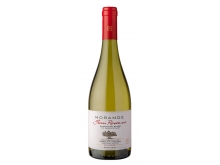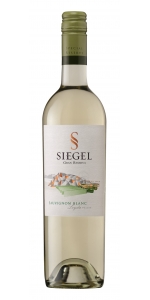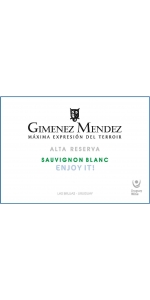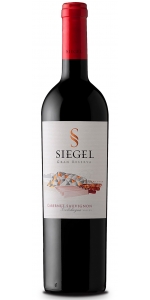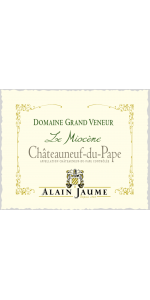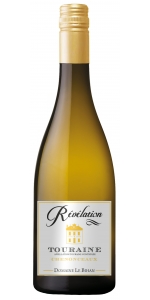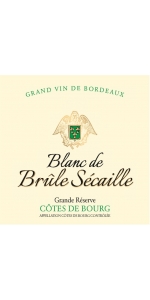Morande Gran Reserva Sauvignon Blanc 2022
6 bottles with free shipping for: $138.00
12 bottles with free shipping for: $228.00
| BUY MORE! SAVE MORE! | ||||||||||||||||||||
|
| Country: | Chile |
| Region: | Casablanca Valley |
| Winery: | Vina Morande |
| Grape Type: | Sauvignon Blanc |
| Organic: | Yes |
| Vintage: | 2022 |
| Bottle Size: | 750 ml |
Morande Gran Reserva Sauvignon Blanc is made from 100 percent Sauvignon Blanc
The grapes for this wine come from Morande's estate located in Casablanca, a few miles from the Pacific Ocean. This valley is well-known for its cool climate that allows to obtain small clusters and grapes that develop colors, aromas, and flavors that are characteristic of a slow ripening process. Of limited production, the vineyard is trellised to the vertical shoot position and grows on clayey, granitic soils of low fertility that give life to remarkable wines.
Bright straw-yellow color, delicate aromas with fresh herbs, honey and orange-blossom, combined with white fruit and citrus fruit. The palate shows complex flavors, with edgy, mineral freshness and outstanding citrusy notes of grapefruit, herbs and white peaches. It is persistent, elegant and with a structure that makes for good aging potential.
The grapes were picked by hand in 10-kilo boxes. A large percentage was whole-bunch pressed and the rest underwent a cold maceration for eight hours in the press. The must fermented mainly in French oak foudres, but a part also in cement eggs. The wine was kept in both its containers during six months before bottling.
Pair with white meat, fish and seafood, fresh cheese.
When Pablo Morandé founded Viña Morandé in 1996, he did it with a great vision for the future and with the same audacity that drove him, years earlier, to be the first person to plant vines in the Casablanca Valley. They also aimed at using less renowned varieties that have been traditionally grown there. It may be worth remembering that, since the very beginning of Viña Morandé, the old vineyards grown in the Secano have had a special meaning for the winery. On one hand, Maule, and particularly the area of Cauquenes, is the place of birth of their founder. And on the other, the winery has developed an important viticultural work throughout the years in its different terroirs, crafting wines that have been present since the first day in their portfolio.
Today Casablanca is one of the most internationally recognized wine regions for the quality of its wines. Its primary geographic condition is its maritime influence, which enters from the Pacific Ocean and produces morning fog that moderates the temperatures. This characteristic encourages optimal vineyard development, which demands special care to reach the desired ripeness. The varieties that grow best in Casablanca are Chardonnay, Sauvignon Blanc, and Pinot Noir.
The Belen property is located in the Lo Ovalle sector of the Casablanca Valley. The 130 hectares of vineyards were planted in two stages, the first in 2004 and the second in 205. The vineyard density is 10,101 plants/hectare with a distance of 1.5 meters between rows and 0.00 meters between plants.
Siegel Special Reserva Sauvignon Blanc Leyda is made from 100 percent Sauvignon Blanc
The grapes for the Gran Reserva wines are the product of a careful selection of Siegel's best vineyards in the Colchagua Valley, harvested by hand, and revealing a strong expression of the land.
The Gran Reserva wines represent the union of tradition and innovation in two generations. The grapes are sourced through careful selection of their best vineyards in the cool coastal Leyda Valley region. Siegel Gran Reserva Sauvignon Blanc offers a pale yellow color with green hues and reveals intense and complex aromas of grapefruit and pear accented by mineral notes. The palate is balanced and juicy with a vibrant acidity and a soft, lingering finish.
Gimenez Mendez Alta Reserva Sauvignon Blanc is made from 100 percent Sauvignon Blanc.
Gimenez Mendez Sauvignon Blanc shows a very pale hue, almost crystal clear in color. Intense and herbal bouquet in harmony with fruity notes of guava and green apple, mango and maracuja. The wine is full and ample on the palate with a very firm structure. Dry, crisp and lively in the mouth.
Sauvignon blanc grapes are hand harvested very early during some mornings of February. Banches are destemmed and delicately crushed. With a quick press, fresh and very aromatic juice are obtained. Juice is fermented in stainless steel tanks during 15 days at controlled low temperatures, between 14 to 16 °C .Once fermentation is finished lees are kept and stirred for 1 month to get a creamy texture. Then a carefully clarification is necessary. The wine is filtered and stabilized without cold, and finally bottled to keep the freshness. No oak.
Ideal to serve with very spicy seafood, sushi or salads, as well as white meats with sweet-sour sauces, paté. Serve chilled.
Review:
Siegel Gran Reserva Cabernet Sauvignon is made from 100 percent Cabernet Sauvignon.
Pre-fermentative cold maceration for 5 days, with alcoholic fermentation occuring at 27-29 degrees C to better extract polyphenols from the wine. Post-fermentative maceration for 2 to 3 weeks. Once the wine has been blended it is smoothly clarified. Aged in French oak barrels for 10 to 12 months.
The grapes for the Gran Reserva wines are the product of a careful selection of Siegel's best vineyards in the Colchagua Valley, harvested by hand, and revealing a strong expression of the land.
Deep ruby red with aromas of cassis, red fruits, black pepper, black cherries, tobacco, cinnamon and chocolate. On the palate it is highly concentrated with juicy notes of red fruits and spices. Structured & complex from the oak aging.
Serve with red meat, braised stews, grilled pork and flavorful cheeses.
Grand Veneur Chateauneuf du Pape Blanc Le Miocene is made from 60% Clairette, 40% Roussanne
Pale yellow colour with hints of green, aromas of white flowers (may blossom, honeysuckle).
The palate is pleasantly balanced between liveliness and roundness, which brings out characteristics of dried apricot, honey and elderberry. A Châteauneuf du Pape white displaying a great finesse.
Best between 1 and 8 years.
Soil type Coming from the single vineyard named “La Fontaine”, the plot is facing north.It is made of clay-sand and limestone. Thanks to the northern orientation, it is always very well aired. This sector allow the Roussane and Clairette to mature in great conditions without losing freshness, which we believe is key point. Winemaking & ageing Whole-bunch pressing. Vinification in stainless-steel tanks. Fermentation temperature controlled at 15°C.
Review:
"The classic white from this estate is the 2021 Châteauneuf Du Pape Le Miocene Blanc, and it shines in the vintage. Based on 60% Clairette and 40% Roussanne, it has a lighter gold hue as well as textbook aromatics of citrus, pears, and minty herbs. I love its balance, it’s medium-bodied, has the vintage’s fresher style, and outstanding length. It should evolve gracefully, and while the safe bet is to enjoy bottles over the coming 2-4 years, I wouldn’t be surprised to see this evolve for well over a decade."
- Jeb Dunnuck (November 2022), 92 pts
Le Bihan Touraine Chenonceaux Sauvignon Blanc is made from 100 percent Sauvignon Blanc.
Touraine Chenonceaux "Revelation" is a limpid and brilliant colored wine with pale gold highlights. The nose is intense and expressive, full of floral aromas. It is dry and harmonious on the palate, with a tangy edge and a lively finish.
To drink as Aperitif, or with white meat, Loire asparagus and seafood.
Brulesecaille Blanc Grande Reserve is made from 75% Sauvignon Blanc, 25% Sauvignon Gris.
Average age of the vines is 25 years.
Manual harvest from September 19th-20th 2016.
Direct press at low pressure (whole cluster) with low amount of SO2, settling at 10°C.
Addition of yeast and alcoholic fermentation in casks 400 liters.
Raised on the lees for 6 months with regular batonnage (stirring of the lees).
Bottling in april 2017.
Fish, seafood, white meats, fine goat cheeses.
- back
Intense violet, hints of lavender, black cherry, fresh leather and spicy flavors (white pepper and clove), rich and concentrated with a lingering spicy finish. Will age gracefully for several decades.
Review:
Morlet doesn’t make much of it, but their Syrah is beautiful and well worth seeking out. The 2018 Syrah Bouquet Garni comes from the cool climate, higher elevation Bennett Valley in Sonoma and offers a big, exotic nose of blackberry and blackcurrant fruits as well sandalwood, dried flowers, new leather, and white pepper. The fruit is ripe and opulent, yet it still holds onto loads of classic cooler-climate Syrah gaminess and peppery notes. Full-bodied on the palate, it’s balanced and has a lively, clean texture, beautiful depth of fruit, and a great finish. Enjoy bottles any time over the coming decade.
-Jeb Dunnuck 97 Points
From the most recognized Napa Valley red blend comes a distinct, new wine. Made in the same iconic style as The Prisoner Red Blend, we proudly introduce The Prisoner Cabernet Sauvignon. Redefining taste once again.
On the nose, blackberry, currant, and plum are layered with dried, crushed herbs and licorice. On the palate, cedar, vanilla, nutmeg, and toasted coconut lead as plum and dried blackberries culminate in a lush, full mouthfeel and a lengthy, balanced finish.
Chef Brett recommends pairing The Prisoner Cabernet with Grilled Ribeye or Aged Gouda Cheese.

